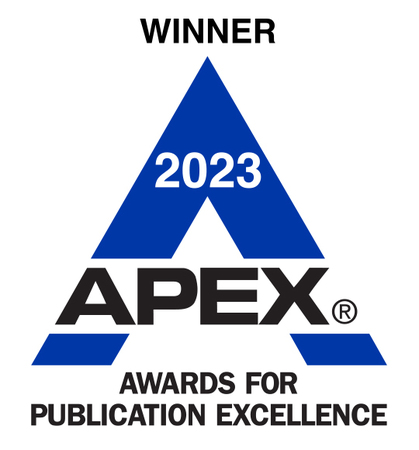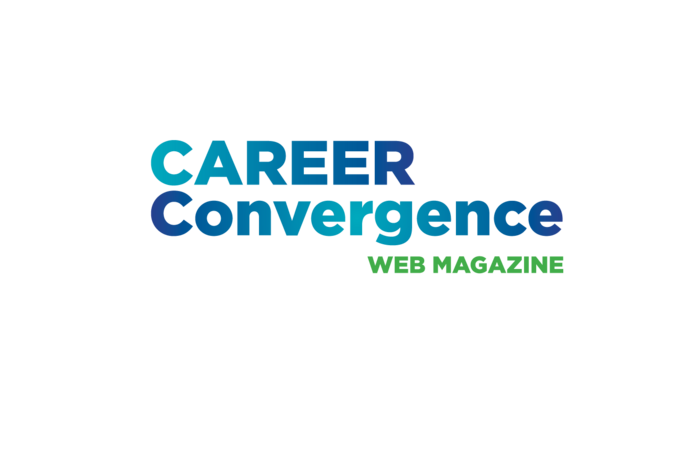06/01/2021
The ARCCS of Career Development in Unprecedented Times
By Jerilyn Wagner
“One way to think about careers today is to consider yourself a surfer: We catch a good wave early in our life; as it crests and falls, we need to look for the next wave.”
~ Josh Bersin (Bersin, 2017, p. 1)
Managing Career Development in Unprecedented Times
As we ushered in the second decade of the 21st century, the word “unprecedented” became the go-to descriptor for the changes emerging in rapid succession. For career professionals assisting those entering the workforce, and those already in the workforce, we need to evolve approaches to assist with career management on the edge of “unprecedented” chaos.
Workers today have to manage their careers through a global pandemic (i.e., COVID-19), increased climate change events (e.g., flooding, hurricanes, forest fires), as well as several major technological advances (e.g., Artificial Intelligence, rapid vaccine development and distribution, 5G telecommunications, Zoom videoconferencing). Each of these upheavals and shifts have been described as unprecedented and chaotic, creating what appeared to be disorder and confusion. Some of these events have also led to the reorganization of numerous businesses; unemployment claims that swelled to Great Depression levels; new remote work structures; and increased demand for public health workers, emergency response professionals, and delivery personnel. Yet, if carefully examined, experts had predicted most of the changes through facts and patterns that were traceable prior to the events. These “unprecedented” events, both catastrophic and ground-breaking, have had profound impacts on the workplace and could be viewed as career disrupters.
As was highlighted in the recent Career Convergence article (Rose, 2021), the Chaos Theory of Careers (CTC) has emerged as a career development theory to describe the reality of career development and account for the changing nature of work in the 21st century. Rose further highlighted the three phases of CTC identified by Schlesinger (2016) – Complexity, Chance, and Change – which influence our lives and career development as much as more stable factors like our ability and personality.
Workforce patterns have been shifting away from the days of steady, predictable, and somewhat linear career paths. Given the rapid pace of technological advances, many jobs, crafts, and skills quickly become out of date. Indeed, according to Pryor and Bright (2012), “Fundamentally, our world is less predictable than once was thought. Our lives are uncertain and our work is subject to changes over which we can have limited control…The Chaos Theory of Careers draws attention to the limitations of our simplifications and the challenges of living uncertainly in our predictably complex world. [It is] a theory of career development that has interconnection, change, and chance at its heart” (p. 3, 12).
Strategies and Tools for Application of Chaos Theory of Careers
As career practitioners applying CTC, we might change our client approach from guided goal setting to facilitating curiosity and possibilities. Rather than working with clients to solve a puzzle, find an answer, or select the best option, we could aid the client in exploring clues in their story, developing a strategy and exploring several options in the process. This chaos-informed coaching helps the client establish short-term flexible goals, recognizing that complex factors outside of work and other obstacles are an inevitable part of contemporary career journeys.
Strategies and possible tools that career practitioners can leverage in a chaos-informed approach include:
- Engaging clients in storytelling and sharing experiences to find the meaning in their experiences
- Examples: Career Collage (Bright & Pryor, 2012), Metaphors (Heppner et al., 1994), Stories (Brooks, 2017), Life Mapping (Heppner et al. 1994)
- Discussing failures and successes; looking at different perspectives and feedback to further clarify characteristics of those experiences
- Examples: Reframing Failure (Burnett & Evans, 2016), Mind Maps (Cai, 2017)
- Identifying typical patterns, the recurring themes in the patterns and possible implications
- Examples: Idea Journals (Heppner et al., 1994), Wandering Maps (Brooks, 2017), Career Lifelines/Timeline Analysis (Heppner et al., 1994), Mind Maps (Cai, 2018)
- Encouraging client networking to identify possibilities
- Examples: Information Interviews (Knight, 2016), Prototyping (Burnett & Evans, 2016)
- Exploring what really matters to the client as well as examining what has worked
- Examples: Journaling/Wayfinding (Burnett & Evans, 2016), Skills Affirmation (Indeed, 2021)
- Generating several possibilities, trying some of the possibilities
- Examples: EPSA Model (Schlesinger, 2016), Networking (Bright, 2017), Contingent questioning – “what if…” (Bright, 2017), Butterfly Model (Bright and Pryor, 2012), Imaginal Experiences (Akhtar, 2017)
ARCCS Model to Support Chaos Based Counseling
CTC emphasizes continual, uncertain, and non-linear change, the complexity of influences and emergent fractal patterns in careers. Therefore, counselors should facilitate client development of core skills to face the emergent career challenges. Given CTC’s focus on career patterns, a useful acronym to support client aptitude in their career pursuits would be ARCCS: Adaptability, Resilience, Creativity and Control, and Self-Efficacy. Career professionals would serve clients well by helping them to develop these core skills.
Counselors may need to leverage ARCCS elements and work with their clients in the following domains:
Adaptability – Experiment, generate ideas, and try many different possibilities; be prepared for and ready to recognize and accept failure, learn from it and move on; make failure survivable by identifying strategies to limit its impact and keep trying new options.
Resilience – Develop effective analysis and problem-solving skills; enhance self-esteem; develop the ability to convert accidents and misfortune into lucky accidents and good fortune (Marks et al., 2014); be mindful of health, well-being, and optimistic self-management.
Creativity – Introduce and build abilities in what Dan Pink labeled “the six essential aptitudes” of professional and personal fulfillment: Design, Story, Symphony, Empathy, Play and Meaning (2005).
Control – Introduce and practice situational review through an exercise using Stephen Covey’s Circle of Influence and Control (Then Somehow, 2018), which is a way for clients to examine their career concerns and identify how they can influence their career pursuits.
Self-Efficacy – Apply principles of self-efficacy that stem from the verbal persuasion of key influencers, lessons learned vicariously from relatable figures, reflection on effective mastery in past successes or overcoming of obstacles, and identification of means to heighten emotional and physical health. Early studies of the CTC counseling approach demonstrated increased levels of client career decision self-efficacy over those receiving traditional career counseling (McKay et al., 2005).
Building a Career for Complexity and Uncertainty
The career development professional has the opportunity to enable the client to reframe their understanding of self, others, and the environment through their experiences and ongoing learning. The CTC “inspiringly draws attention to the human potential to develop, adapt and overcome.” (Pryor & Bright, 2006, p.13) “Counseling outcomes [are] intended to assist clients to develop their career through enabling them to negotiate effectively and construct meaning lives and career in a world that is intrinsically chaotic.” (Pryor & Bright, 2011, p. 99). By building core skills and enhancing self-efficacy, the counselor is giving the client the tools to internalize and sustain an ability to face forthcoming unprecedented change.
References
Akhtar, M. (2017, April 8). What is self-efficacy? Bandura’s 4 sources of efficacy beliefs. Positive Psychology. http://positivepsychology.org.uk/self-efficacy-definition-bandura-meaning/
Bersin, J. (2017, July 31). Catch the wave: The 21st-century career. Deloitte Insights. https://www2.deloitte.com/us/en/insights/deloitte-review/issue-21/changing-nature-of-careers-in-21st-century.html
Bright, J. (2017, May). Introduction to using the chaos theory of careers [Conference Workshop]. APCDA, Quezon City, Philippines. https://apcda.wildapricot.org/resources/Documents/2017Conference/441_Bright_PDI.pdf
Bright, J. E. H., & Pryor, R. G. L. (2012). The chaos theory of careers in career education. Journal of the National Institute for Career Education and Counseling, 28, 10–20. https://www.researchgate.net/publication/234633957_The_Chaos_Theory_of_Careers
Brooks, K. (2017). You majored in what? Designing your path from college to career (Revised ed.). Plume.
Burnett, W. & Evans, D. J. (2016). Designing your life: How to build a well-lived, joyful life. Alfred A. Knoff.
Cai, I. (May 6, 2018). 3 ways to use mind mapping to design your career and get unstuck. Medium. https://iriscai-57883.medium.com/3-ways-of-using-mind-mapping-to-design-your-career-get-unstuck-6fea5e492348
Heppner, M. J., O’Brien, K. M., Hinkelman, J. M., & Humphrey, C. F. (1994). Shifting the paradigm: The use of creativity in career counseling. Journal of Career Development, 21(2), 77–86.
Indeed. (2021, January 4). Positive affirmations in the workplace: Impact, tips and examples. Career Guide. https://www.indeed.com/career-advice/career-development/positive-affirmations
Knight, R. (2016, February 26). How to get the most out of an informational interview. Harvard Business Review. https://hbr.org/2016/02/how-to-get-the-most-out-of-an-informational-interview
Marks, M., Mirvis, P., & Ashkenas, R. (2014, October). Rebounding from career setbacks. Harvard Business Review. https://hbr.org/2014/10/rebounding-from-career-setbacks#
McKay, H., Bright, J. E. H., & Pryor, R. G. L. (2005). Finding order and direction from chaos: a comparison of chaos career counseling and trait matching counseling. Journal of Employment Counseling, 42(3), 98–112. https://doi.org/10.1002/j.2161-1920.2005.tb00904.x
Pink, D. H. (2005). A whole new mind: Why right-brainers will rule the future (Annotated ed.). Riverhead Books.
Pryor, R. & Bright, J. (2006) Counseling Chaos: Techniques for Practitioners, Journal of Employment Counseling, 43(1), 2-17. DOI:10.1002/j.2161-1920.2006.tb00001.x
Pryor, R. & Bright, J. (2011). The chaos theory of careers: A new perspective on working in the twenty-first century. Routledge.
Rose, S. B. (2021, March 1). Pandemic disruption meets the chaos theory of careers: A method for advising clients in a tumultuous employment landscape. Career Convergence. https://demotcs.com/aws/NCDA/pt/sd/news_article/354678/_PARENT/CC_layout_details/true
Schlesinger, J. (2016). Chaos and your career: A framework for chaos theory of careers in college centers. LinkedIn Pulse. https://www.linkedin.com/pulse/chaos-your-career-jon-schlesinger/
Then Somehow. (2018, February 19). You have more power than you think: Try circle of influence. Medium. https://medium.com/then-somehow/you-have-more-power-than-you-think-try-circles-of-influence-2bd0a96403d5
Jerilyn Wagner, MSEd, CCC, SPHR is the Career Advisor for MHR/MBA students at the Utah State University Huntsman School of Business and Owner/Principal Consultant for Engaged Pathways (engagedpathways.com). In working with students and clients, she draws on her background in training and development and organization effectiveness, across diverse industries, to support individuals, managers and teams in building engaging learning environments. Engaged Pathways specializes in clarifying strengths, building growth mindsets, clarifying values and developing satisfying career journeys. Contact her at engagedpathways@gmail.com.
3 Comments
Jim Peacock on Friday 06/04/2021 at 11:04 AM
I am finishing up my Happenstance seminar and continue to see the connection to CTC. This is so helpful to me in understanding CTC.
If I could be so bold, I might add a 3rd "C" for curiosity, ARCCCS as I think this is a characteristic required to discover new opportunities by accident.
Great job - and I love how "adaptability" is first.
Meg Gerry on Friday 06/04/2021 at 04:08 PM
I agree with Jim about the connection to John Krumboltz's Happenstance learning theory.
I love how you included tools and strategies for the career practitioner. Very helpful!
Excellent article.
Melissa Venable on Monday 06/07/2021 at 08:19 AM
Jerilyn, thank you for this timely look at CTC with an extended view of how we can apply it today. It's likely we'll need to carry the ARCCS model with us for the foreseeable future as we work with students and clients, and manage our own careers. Thank you!



